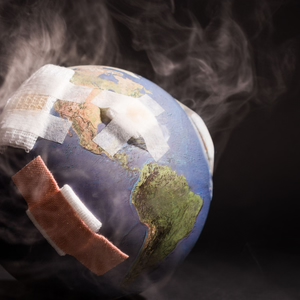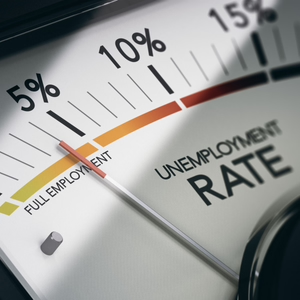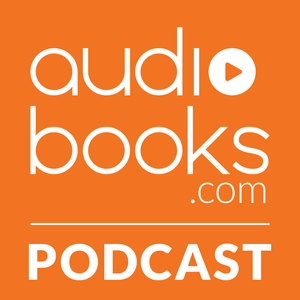
Buying Time in the Fight Against Climate Change
09/01/23 • 25 min
According to the National Oceanic and Atmospheric Administration, July 2023 was actually the hottest month ever recorded on Earth. The heat wave caused hundreds of deaths, thousands of hospitalizations, and billions of dollars in damages. It also exacerbated droughts, wildfires, and power outages.
The culprit behind this unprecedented heat is climate change, driven by the accumulation of greenhouse gases in the atmosphere. The most well-known greenhouse gas is carbon dioxide, which comes from burning fossil fuels. Often overlooked is methane, which accounts for about 16 percent of global greenhouse gas emissions and has more than doubled since pre-industrial times.
Robert Stavins, PhD ’88, says that reducing the amount of methane in the atmosphere is a critical and cost-effective way to slow climate change and its impacts. To get there, the AJ Meyer professor of Energy and Economic Development at the Harvard Kennedy School is leading a new initiative at the University’s Salata Institute which aims to reduce methane emissions from different sectors using innovative approaches and collaborations. If successful, he says the world can “bend the curve” on climate change, giving humanity desperately needed time to address the larger, long-term problem of carbon dioxide.
According to the National Oceanic and Atmospheric Administration, July 2023 was actually the hottest month ever recorded on Earth. The heat wave caused hundreds of deaths, thousands of hospitalizations, and billions of dollars in damages. It also exacerbated droughts, wildfires, and power outages.
The culprit behind this unprecedented heat is climate change, driven by the accumulation of greenhouse gases in the atmosphere. The most well-known greenhouse gas is carbon dioxide, which comes from burning fossil fuels. Often overlooked is methane, which accounts for about 16 percent of global greenhouse gas emissions and has more than doubled since pre-industrial times.
Robert Stavins, PhD ’88, says that reducing the amount of methane in the atmosphere is a critical and cost-effective way to slow climate change and its impacts. To get there, the AJ Meyer professor of Energy and Economic Development at the Harvard Kennedy School is leading a new initiative at the University’s Salata Institute which aims to reduce methane emissions from different sectors using innovative approaches and collaborations. If successful, he says the world can “bend the curve” on climate change, giving humanity desperately needed time to address the larger, long-term problem of carbon dioxide.
Previous Episode

A Short History of Technology and Thought
Every technology is accompanied by a cultural technique says the artist and media scholar Emilio Vavarella, a PhD candidate in film and visual studies and critical media practice at the Harvard Griffin Graduate School of Arts and Sciences. “You have the calculator, but you also have the number," he says. "Everything we do from speaking to being able to write an imaginary story—all of these are specific techniques that we have developed. It’s what makes us human.” Vavarella calls these frameworks media models: abstract models that mirror specific technologies. Media models are the paradigms through which humans try to understand the world and themselves. Their development is slow and not necessarily linear or progressive, but it embraces all sectors of human life. In this episode of the Colloquy podcast, Vavarella gives a short history--from pre-historic hydrology to modern computation--of the ways in which technology and culture have interacted to shape the ways human beings think.
Next Episode

What We Learned from the COVID Economy
The US economy is strong. Unemployment is close to a 50-year low, real wages are rising for those at the bottom of the income ladder, and inflation is down though still not entirely in the rearview mirror. You’d never know it from the press coverage, though, which tends to focus on how people feel about the economy, namely that it’s bad and getting worse.
In this episode of Colloquy, we take a step back from perception to look at where we were, where we are, and how we got here. What did the pandemic shocks teach us about government intervention in the economy? What did they show us about inflation and unemployment? And what have economists learned that can help policymakers cope with the next big crisis?
With us to parse these questions is Karen Dynan, a professor of the practice at the Harvard University Department of Economics and the Harvard Kennedy School. A senior fellow at the Peterson Institute for International Economics, Professor Dynan is the chair of the American Economic Association Committee on Economic Statistics. She previously served as assistant secretary for economic policy and chief economist at the U.S. Department of the Treasury from 2014 to 2017. She received her PhD in economics from Harvard Griffin GSAS in 1992.
If you like this episode you’ll love
Episode Comments
Generate a badge
Get a badge for your website that links back to this episode
<a href="https://goodpods.com/podcasts/colloquy-216313/buying-time-in-the-fight-against-climate-change-32958259"> <img src="https://storage.googleapis.com/goodpods-images-bucket/badges/generic-badge-1.svg" alt="listen to buying time in the fight against climate change on goodpods" style="width: 225px" /> </a>
Copy




